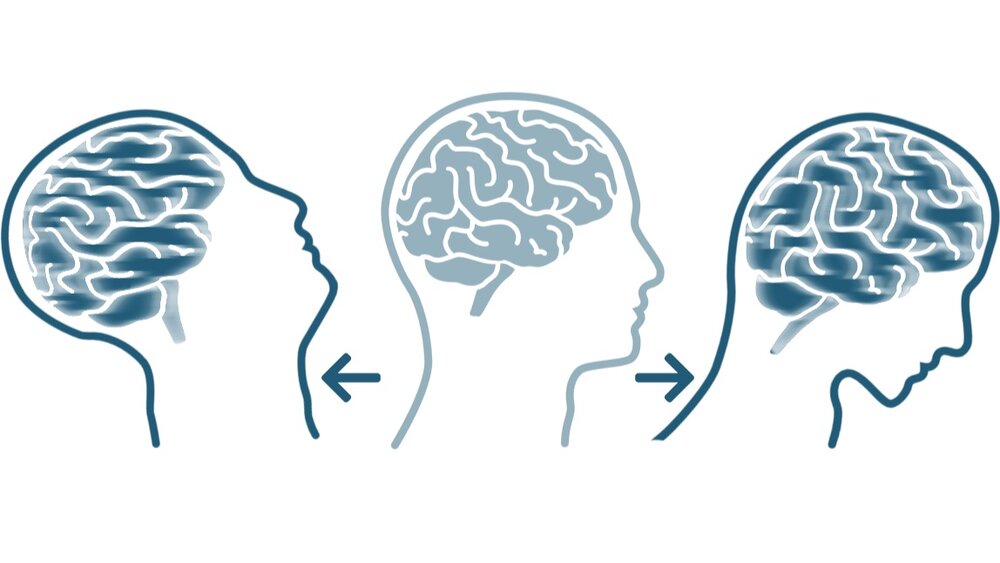Is There a Link Between Development of Dementia and Concussion History?
Both concussions and dementia are brain conditions that have a far-reaching impact. Because they both similarly affect the brain, much research has been conducted to determine if there is a link between concussion history and the development of dementia. A concussion, also referred to as a mild traumatic brain injury (mTBI), is a brain injury that results in disrupted normal brain function – specifically changes in cerebral pathophysiology. It can result from an impact, a fall, or even a violent motion without impact. Symptoms include headache, confusion, memory loss, difficulty concentrating, sensitivity to light and sound, dizziness, fatigue, irritability, and increased emotionality. Many symptoms take 24-48 hours to develop after an injury, and, if mismanaged, can result in life-long impairments.
 Dementia manifests similarly to a concussion in many ways. It is the result of damage to brain cells that interfere with the ability of the cells to communicate with each other. Symptoms include loss of cognitive functioning, difficulty thinking, remembering, and reasoning. It is NOT a normal part of aging. Many similarities in the neurodegeneration patterns of concussions and Alzheimer’s disease have been reported. A retrospective study by Snowden, Hinde, Reid, and Christie (2022) suggests individuals are almost two times more likely to be diagnosed with dementia if they previously suffered an mTBI. Other studies have reported the risk for developing dementia to be four times more likely if there is a history of concussions. This risk increases with multiple or more severe mTBI’s. Research also suggests that mTBI is associated with an earlier age of onset for cognitive impairment as compared to someone without a history of mTBI. The risk does appear to decrease over time after an mTBI but is still evident even 30 years after a trauma.
Dementia manifests similarly to a concussion in many ways. It is the result of damage to brain cells that interfere with the ability of the cells to communicate with each other. Symptoms include loss of cognitive functioning, difficulty thinking, remembering, and reasoning. It is NOT a normal part of aging. Many similarities in the neurodegeneration patterns of concussions and Alzheimer’s disease have been reported. A retrospective study by Snowden, Hinde, Reid, and Christie (2022) suggests individuals are almost two times more likely to be diagnosed with dementia if they previously suffered an mTBI. Other studies have reported the risk for developing dementia to be four times more likely if there is a history of concussions. This risk increases with multiple or more severe mTBI’s. Research also suggests that mTBI is associated with an earlier age of onset for cognitive impairment as compared to someone without a history of mTBI. The risk does appear to decrease over time after an mTBI but is still evident even 30 years after a trauma.
Because of the link between concussions and the development of dementia, prevention must involve strategies to reduce concussion incidence and risk. Falls are the most common cause of mTBI for older adults – one in four adults over 65 reports falling each year.
Adults over 75 years old are three times more likely to be hospitalized from a fall compared to adults ages 65-74. Men are two times more likely to be hospitalized from a fall compared to women. Strategies to prevent falls include using an assistive device, such as a walker or a cane if balance is a concern. Fall prevention classes and practicing balance exercises can help improve stability and reduce fall risk. Keep floors clear to reduce household tripping hazards such as rolled-up rug edges.
Concussion risk is also very high for individuals participating in sports, meaning that concussion prevention and risk reduction must start early. Sports such as hockey, football, basketball, and cheerleading are among the highest-risk sports for concussions. The use of appropriate protective equipment is one strategy that can be utilized to reduce concussion incidence. Research supports that the use of a proper fitting helmet when skiing or snowboarding can help reduce the risk of concussion. It has also been demonstrated that wearing a mouthguard in basketball, hockey and rugby resulted in a 19% reduced risk of concussion (Emery et al., 2017).Policy change is another strategy that can be used to significantly reduce concussion incidence. One of the most effective ways to lower concussion rates in sports is to eliminate body contact and reduce collision. For example, the removal of body checking in U13 ice hockey in Canada resulted in a 67% reduction in risk for concussions (Emery et al., 2017). Contact can also be limited without being removed entirely. In youth football, the removal of contact in practice reduced the occurrence of head impacts (Emery et al., 2017). Another strategy involves heavier punishment for head contact, encouraging players to be more careful. A professional soccer league found that the stricter enforcement of red cards for high elbows when heading the ball led to a reduced risk of concussion (Emery et al., 2017). Another crucial strategy for the risk reduction and prevention of concussions is proper education. Training coaches, parents, and athletes to recognize the signs of a concussion, as well as understand the implications of a concussion can help prevent players from returning to sport too early. Having an Athletic Therapist on the bench is another easy strategy, as we are all trained to recognize, assess and rehabilitate concussions. Returning to sport too early after a concussion can result in long-term consequences. If you think you have suffered a concussion, book in with me today, and I can help get you back to your activities as soon and safely as possible.
Crystal Bartkowski
Certified Athletic Therapist
